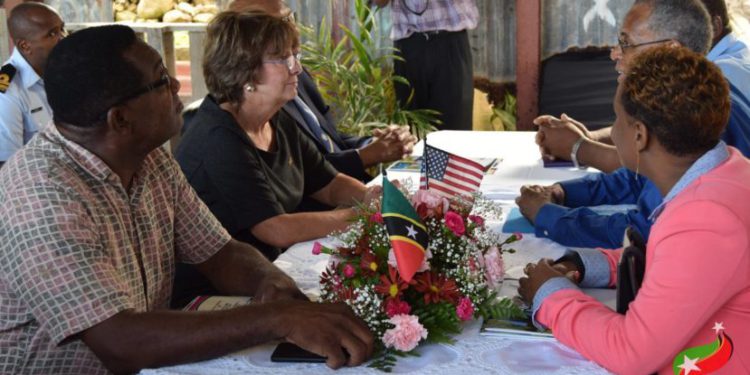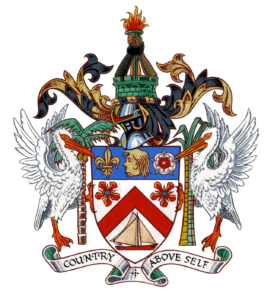(St. Christopher National Trust) St. Kitts and Nevis – October 12, 2017: The project to restore the historic Spooner’s Ginnery in Cayon has moved a step closer to commencement with funds received from the US Embassy in Barbados, through its US Ambassador’s Fund for Cultural Preservation.
A recently approved grant from the Fund will allow the National Trust to begin the First Phase of the project which when completed, will see the restoration and development of the ginnery factory and museum, and the fencing of the property.
The multi-phase project proposes to restore the Great House, the Cotton Ginnery factory, its equipment and ancillary structures, and the Manager’s House and older ruins.
The Great House (built around 1870) will be used as a visitor center, office and rental space for functions. The Ginnery will house a museum and gift shop, while the Manager’s House will be developed for use as a gallery, restaurant and artisan center.
U.S. Ambassador to Barbados, the Eastern Caribbean and the OECS, Linda S. Taglialatela, toured the Ginnery on Friday October 5th, where she met with representatives of the St. Christopher National Trust – which manages the site – the Governor General Sir S.W. Tapley Seaton and other government officials.
Ambassador Taglialatela marveled at the uniqueness of the Ginnery and reflected on the importance of preserving history and heritage. National Trust Executive Director Ryllis Percival spoke at length about the critical need for St. Kitts to emphasize its unique heritage and transition from focusing on the ‘sun and sand’ tourism product being offered by most Caribbean destinations.
The group discussed the benefits that the development of the Spooner’s Ginnery would bring to the area in terms of enterprise for the residents and how it would enhance the overall tourism product of St. Kitts over time. They spoke of further financing opportunities and growing the relationship between the National Trust and the United States Embassy.
The Ambassador also expressed an interest in exploring linkages between the Spooner’s Project and Nevis’ Sea Island Cotton Industry as well as with the cotton manufacturing industry in the southern United States.
Also at the event were the President of the National Trust, Schneidman Warner, Chairman of the National Trust’s Building and Sites Committee Othneil Heyliger, the Deputy Prime Minister, Shawn Richards, the Constituency Parliamentary Representative, Eugene Hamilton along with National Trust Executive Member Livingston Huggins and Heritage Consultant Leonard Stapleton, who assisted in the crafting of the final project proposal that was submitted to the US Embassy.
History of Spooner’s & Overview of the Restoration Project
Spooner’s Estate is first referenced on a 1753 map which identifies it as an animal-driven sugar mill. Later records show that it was converted to steam-powered milling in the 1870s. During this period, the Estate functioned as one of several regional mills on St. Kitts.
Around 1900, its ownership changed hands and the new owners, Sendall and Wade were among the first planters in the Caribbean to successfully transition from sugar to cotton production.
In 1901 they installed the first ginnery on St. Kitts. By 1907, 20, 000 acres of cotton were being cultivated in the West Indies. From 1912-1914, St. Kitts and Nevis produced nearly a quarter of the region’s crop yield.
Spooner’s Ginnery continued to operate until the 1970s when it was purchased by the government of St. Kitts and Nevis. The property was vested in the St. Christopher National Trust in 2009.
What remains today are structures and ruins spanning three centuries and representing three major periods in the agro-industrial history of St. Kitts and Nevis.
The proposed design for the redevelopment of Spooner’s Ginnery is intended to preserve the historical site by stabilizing and restoring existing structures, constructing several new structures and integrating these elements with appropriate landscaping allow for multiple-purpose use. These include historical interpretation, community and tourism recreation and events as well as the sale of island crafts and souvenirs. The overall development strategy is designed to maintain, protect and enhance the natural, cultural and historical heritage of the site while also promoting an appealing business atmosphere.











